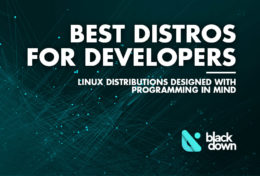Solana’s growth stems from measurable technical advantages rather than market speculation. While Bitcoin price USD and Solana price USD dominate headlines, the platform’s architecture delivers specific benefits that traditional blockchains can’t match.
Network Performance Testing
Solana advertises 65,000 transactions per second, though production environments typically see 2,000-3,000 TPS. This remains significantly higher than Ethereum’s 15 TPS or Bitcoin’s 7 TPS. The 400-millisecond block time enables sub-second transaction confirmations, compared to Ethereum’s 12-second blocks or Bitcoin’s 10-minute confirmations.
Transaction costs stay below $0.001 even during network congestion. NFT mints that peaked at $0.002 would cost $20-50 on Ethereum under normal conditions, potentially hundreds during high demand periods. These economics enable application designs impossible on high-fee chains.
The Proof of History Innovation
Solana’s Proof of History creates a verifiable timeline before consensus begins, unlike traditional blockchains where validators must communicate to agree on time. The system uses a sequential hash function where each output becomes the next input, creating an unbreakable chain proving event order.
This architecture allows validators to process transactions in parallel rather than waiting for network-wide agreement at each step. Transactions avoid mempools and bidding wars for block space. Applications behave predictably regardless of network activity.
The technical implementation means programs execute deterministically. Developers can calculate exact transaction costs and timing before submission. This predictability proves valuable for high-frequency trading applications and automated market makers requiring precise execution.
The Developer Experience
Working with Solana requires learning Rust, which presents a learning curve for developers coming from Solidity. The investment pays dividends through Rust’s memory safety, eliminating reentrancy attacks and integer overflows. The compiler catches mistakes that have drained millions from smart contracts on other chains.
The Anchor framework improves developer productivity significantly. Complex operations requiring 500 lines of raw Solana code shrink to 50 lines with Anchor. A basic transfer program demonstrates the simplicity:
#[program]
pub mod my_program {
use super::*;
pub fn transfer(ctx: Context<Transfer>, amount: u64) -> Result<()> {
let from = &mut ctx.accounts.from;
let to = &mut ctx.accounts.to;
from.balance = from.balance.checked_sub(amount)?;
to.balance = to.balance.checked_add(amount)?;
Ok(())
}
}Development environment setup on Linux requires minimal configuration. The Solana CLI installs with a single command, and the local test validator provides a complete blockchain environment without Docker containers or complex configurations. Transaction explorers show every instruction, account change, and compute unit consumed, simplifying debugging when issues arise.
Real Applications and Use Cases
The ecosystem demonstrates practical applications beyond theoretical capabilities. Serum’s on-chain order book processes thousands of orders per second. Metaplex has minted millions of NFTs at negligible cost. Shadow Drive provides decentralized storage coordinated through Solana transactions.
Gaming applications particularly benefit from the low-cost architecture. Star Atlas tracks in-game assets on-chain while Aurory manages player inventories without prohibitive fees. These applications handle complex state management that would cost users hundreds of dollars per session on Ethereum.
DeFi protocols including Marinade Finance and Raydium handle billions in volume. Low latency enables arbitrage bots to profit from price differences of fractions of a percent. Market makers update orders hundreds of times per minute, creating deeper liquidity than possible on slower chains.
Infrastructure Requirements
Running a validator demands substantial hardware investment. Minimum specifications include 12+ core CPUs with 24+ threads, 128GB RAM (256GB recommended), 2TB+ NVMe SSD storage, and 1 Gbps symmetric network connectivity. These requirements concentrate validation among professional operators rather than hobbyists.
Infrastructure costs range from $500-1,000 monthly for competitive validators. The network currently operates with approximately 2,000 validators, far fewer than Ethereum’s hundreds of thousands. This concentration raises questions about decentralization trade-offs for performance gains.
Technical Challenges
Solana experienced a 17-hour outage in September 2021. Additional downtime events followed, triggered by transaction flooding, consensus bugs, and resource exhaustion. Each incident led to specific protocol improvements.
QUIC replaced UDP for better flow control. Priority fees enable transaction ordering during peak loads. Local fee markets isolate hot contract impacts. The fixes work, though network stability remains under scrutiny compared to Ethereum’s proven reliability.
State growth hits 1TB annually. Validators must store everything, and solutions like state compression and archival nodes only delay the inevitable. Research into state rent mechanisms hasn’t produced a sustainable answer yet.
Competitive Landscape
Different Layer-1 blockchains make distinct architectural choices. Ethereum L2s like Arbitrum and Optimism inherit Ethereum’s security while adding complexity through bridges and liquidity fragmentation. Solana maintains single composable state at the cost of higher validator requirements.
Near Protocol implements sharding for scalability but complicates composability between shards. Avalanche uses subnets for customization while fragmenting liquidity across chains. Cosmos and Polkadot enable app-specific chains requiring independent security bootstrapping. Each approach optimizes for different use cases and priorities.
The monolithic versus modular debate continues evolving. Solana’s integrated approach simplifies development and user experience. Modular chains offer greater flexibility and customization. Market adoption will ultimately determine which trade-offs prove most valuable.
Institutional Adoption
Major institutions actively build on Solana beyond simple investment positions. Visa’s USDC settlement pilot processes real payments on the network. Google Cloud operates validators and provides developer tools through BigQuery integration. Traditional finance firms explore Solana for settlement efficiency and cost reduction.
According to marketplace data from Binance, “The live price of Solana is $217.80 per (SOL/USD) with a current market cap of $118.05B USD. 24-hour trading volume is $9.22B USD.” Price metrics reflect market confidence though technical merit exists independently of valuation.
Financial institutions explore Solana for practical reasons. Settlement in seconds beats traditional systems by days. Penny transactions enable micropayments impossible with credit cards. According to Binance, “The live price of Solana is $217.80 per (SOL/USD) with a current market cap of $118.05B USD. 24-hour trading volume is $9.22B USD.” But price metrics tell only part of the story.
Roadmap
Firedancer represents Jump Crypto’s independent validator client implementation. Multiple client implementations reduce consensus bug risks and could double network performance. Development progresses with regular updates on GitHub.
Turbine optimizations target block propagation improvements. Concurrent Merkle Trees enable applications managing millions of accounts efficiently. Light client development allows verification without running full nodes, expanding accessibility.
Additional improvements include further QUIC implementation refinements, enhanced fee markets, and state compression techniques. The Solana Foundation’s technical roadmap outlines specific milestones and expected delivery timelines.
Ecosystem Health and Growth
GitHub commits tell one story about Solana’s development activity. Thousands of developers build everything from DeFi protocols to gaming applications. Hackathons draw participants, grants flow from the Solana Foundation, and Solana University runs bootcamps.
But concentration remains an issue. Most successful applications cluster around a few use cases. Geographic validator distribution skews toward specific regions. The ecosystem grows, yet lacks the diversity of Ethereum’s sprawling landscape.
Regulatory Considerations and Global Adoption
Governments approach blockchain with wildly different frameworks. Some jurisdictions embrace Solana for public sector pilots – digital identity systems in developing nations, carbon credit tracking in Europe. Others remain skeptical.
Validator geography clusters in North America and Europe, raising questions about true decentralization. A coordinated regulatory crackdown in key regions could cripple the network. Geographic distribution improves yearly but hasn’t reached Ethereum’s global spread.
Compliance partners help institutional adoption, yet the same partnerships that enable Visa pilots might compromise the cypherpunk vision of permissionless finance. Solana walks this tightrope daily.
The Bottom Line
Solana trades decentralization for speed. Some applications need that speed badly enough to accept the trade-off. Consumer apps get responsive interactions. DeFi protocols handle volume. Games track assets affordably.
Other use cases demand different priorities. Maximum censorship resistance? Look elsewhere. Proven decade-long stability? Not here yet. Hobbyist validator participation? The hardware requirements say no.
Market forces will determine whether performance beats decentralization. Yi He from Binance put it simply: “Crypto isn’t just the future of finance – it’s already reshaping the system, one day at a time.” Solana’s contribution focuses squarely on usability at scale. Whether that’s enough remains an open question.
Alexandra Chen
Related posts
Popular Articles
Best Linux Distros for Developers and Programmers as of 2025
Linux might not be the preferred operating system of most regular users, but it’s definitely the go-to choice for the majority of developers and programmers. While other operating systems can also get the job done pretty well, Linux is a more specialized OS that was…
How to Install Pip on Ubuntu Linux
If you are a fan of using Python programming language, you can make your life easier by using Python Pip. It is a package management utility that allows you to install and manage Python software packages easily. Ubuntu doesn’t come with pre-installed Pip, but here…











